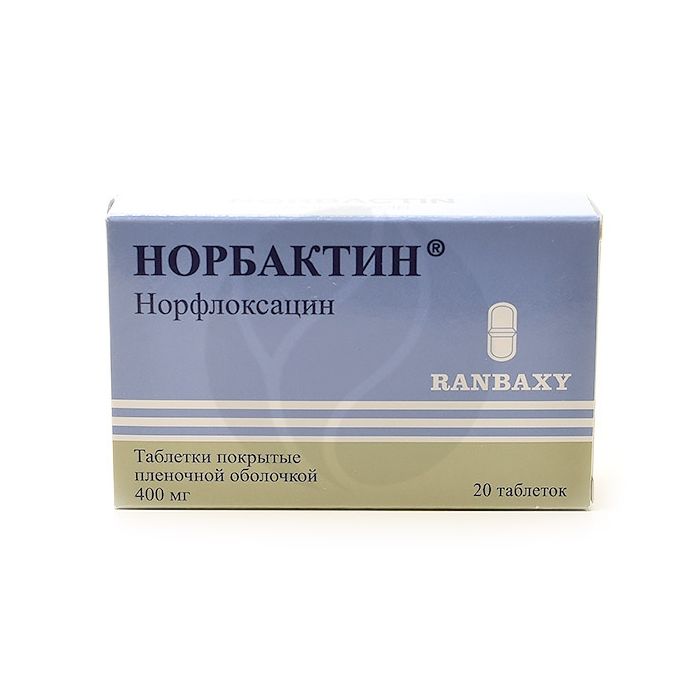Norbactin tablets 400mg, No. 20
Expiration Date: 05/2027
Russian Pharmacy name:
Норбактин таблетки 400мг, №20
Treatment of infectious and inflammatory diseases caused by sensitive microorganisms, including:
urinary tract infections;
genital infections;
uncomplicated gonorrhea;
gastrointestinal infections;
prevention of sepsis in patients with neutropenia;
diarrhea of ??travelers.
Inside, on an empty stomach (at least 1 hour before or 2 hours after meals), drinking plenty of fluids.
In acute uncomplicated cystitis appoint 200-400 mg 2 times / day for 3-5 days.
In acute urinary tract infections - 400 mg 2 times / day for 7-10 days.
For recurrent or chronic recurrent urinary tract infections - 400 mg 2 times / day for 4 weeks and 400 mg / day for up to 12 weeks in case of relapse.
For genital infections - 400-600 mg 2 times / day for 7 days.
In acute uncomplicated gonococcal infection - 800 mg once.
For the prevention of sepsis in patients with neutropenia - 400 mg 3 times / day for 8 weeks.
In case of gastrointestinal tract infections - 400 mg 2 times / day for 3-5 days.
For the prevention of bacterial diarrhea in epidemically unfavorable areas - 400 mg 1 time / day.
In patients with impaired renal function with a Cl creatinine of more than 20 ml / min, correction of the dosage regimen is not required. When Cl creatinine is below 20 ml / min (or serum creatinine level is more than 5 mg / 100 ml) and patients on hemodialysis are prescribed 1/2 therapeutic dose 2 times a day or a full dose 1 time per day.
| Film-coated tablets | 1 tab. |
| norfloxacin | 400 mg |
| excipients: MCC; croscarmellose sodium; sodium lauryl sulfate; corn starch; colloidal silicon dioxide; magnesium stearate; talcum powder | |
| shell: hypromellose; macrogol 400; talcum powder; titanium dioxide; purified water (lost during production) |
in strips or blisters of 10 pcs .; in a pack of cardboard 1, 2 or 3 strips or blisters.
hypersensitivity to norfloxacin or other drugs from the fluoroquinolone group;
deficiency of glucose-6-phosphate dehydrogenase;
cerebral atherosclerosis;
violation of cerebral circulation;
epilepsy, convulsive syndrome;
renal / hepatic impairment;
pregnancy;
lactation period;
children and adolescents (up to 18 years old).

